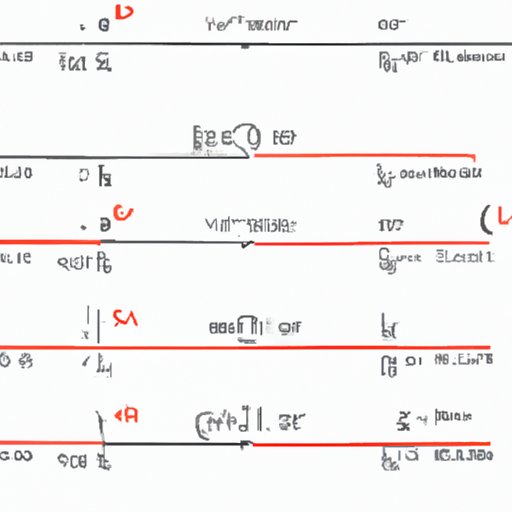10 Total Distance Formulas That Will Blow Your Mind (And Other Things)

Ever wondered how to calculate the total distance between two points, or perhaps the path of a moving object? Distance formulas are the backbone of geometry, physics, and even everyday navigation. Whether you’re a student, a professional, or just a curious mind, understanding these formulas can be both fascinating and incredibly useful. In this post, we’ll explore 10 total distance formulas that will not only blow your mind but also equip you with the tools to tackle real-world problems. From simple Euclidean distance to complex calculus-based formulas, we’ve got you covered. Let’s dive in!
1. Euclidean Distance Formula: The Foundation of Distance Calculation

The Euclidean distance formula is the most basic and widely used method to calculate the straight-line distance between two points in a plane. It’s defined as:
√((x₂ - x₁)² + (y₂ - y₁)²)
This formula is essential in fields like computer science, engineering, and geography.
| Parameter | Description |
|---|---|
| (x₁, y₁) | Coordinates of the first point |
| (x₂, y₂) | Coordinates of the second point |

📌 Note: This formula only works in a 2D plane. For 3D space, add the z-coordinate term.
2. Manhattan Distance: Navigating Grids Like a Pro

The Manhattan distance, also known as the L1 distance, calculates the distance between two points by summing the absolute differences of their coordinates. It’s perfect for grid-based paths:
|x₂ - x₁| + |y₂ - y₁|
This formula is widely used in urban planning and robotics.
3. Chebyshev Distance: The Chessboard Metric

The Chebyshev distance measures the minimum number of moves a king needs to make in chess to reach another square. It’s defined as:
max(|x₂ - x₁|, |y₂ - y₁|)
Ideal for scenarios with restricted movement directions.
4. Minkowski Distance: Generalizing Distance Metrics

The Minkowski distance is a generalized formula that includes Euclidean, Manhattan, and Chebyshev distances as special cases. It’s defined as:
(∑|xi - yi|^p)^(1/p)
Here, p determines the type of distance metric.
5. Hamming Distance: For Binary Data Lovers

The Hamming distance calculates the number of positions at which corresponding bits are different in two binary strings. It’s crucial in telecommunications and data compression.
6. Cosine Distance: Measuring Similarity in High Dimensions
The cosine distance measures the cosine of the angle between two vectors. It’s used in machine learning for text analysis and recommendation systems:
1 - (A · B) / (||A|| · ||B||)
7. Haversine Formula: Distance on a Sphere
The Haversine formula calculates the great-circle distance between two points on a sphere (like Earth). It’s essential for navigation and geography:
2r * arcsin(√(hav(Δlat) + cos(lat₁) * cos(lat₂) * hav(Δlong)))
Where r is the radius of the sphere.
8. Fréchet Distance: For Curves and Paths
The Fréchet distance measures the similarity between curves, often used in GPS trajectory analysis and computer graphics.
9. Integral Calculus for Distance: The Continuous Approach
Using integral calculus, you can calculate the total distance traveled by an object with a known velocity function:
∫|v(t)| dt
This method is fundamental in physics and engineering.
10. Arc Length Formula: Distance Along a Curve
The arc length formula calculates the distance along a curve defined by a function:
∫√(1 + (dy/dx)²) dx
It’s used in geometry and physics for curved paths.
Checklist: Mastering Distance Formulas
- Understand the Euclidean distance for basic 2D calculations.
- Use Manhattan distance for grid-based paths.
- Apply Minkowski distance for generalized metrics.
- Explore Haversine formula for spherical distances.
- Leverage integral calculus for continuous motion.
Distance formulas are more than just mathematical tools; they’re the keys to unlocking solutions in various fields. Whether you’re plotting routes, analyzing data, or solving physics problems, these formulas will undoubtedly come in handy. Start experimenting with them today and see how they transform your understanding of distance!
What is the Euclidean distance formula used for?
+The Euclidean distance formula is used to calculate the straight-line distance between two points in a 2D plane or 3D space.
How does the Haversine formula differ from Euclidean distance?
+The Haversine formula calculates distances on a sphere (like Earth), while Euclidean distance works only in flat, Euclidean space.
When should I use the Minkowski distance?
+Use the Minkowski distance when you need a generalized distance metric that includes Euclidean, Manhattan, and Chebyshev distances as special cases.
distance formulas, Euclidean distance, Manhattan distance, Haversine formula, Minkowski distance, calculus in distance.